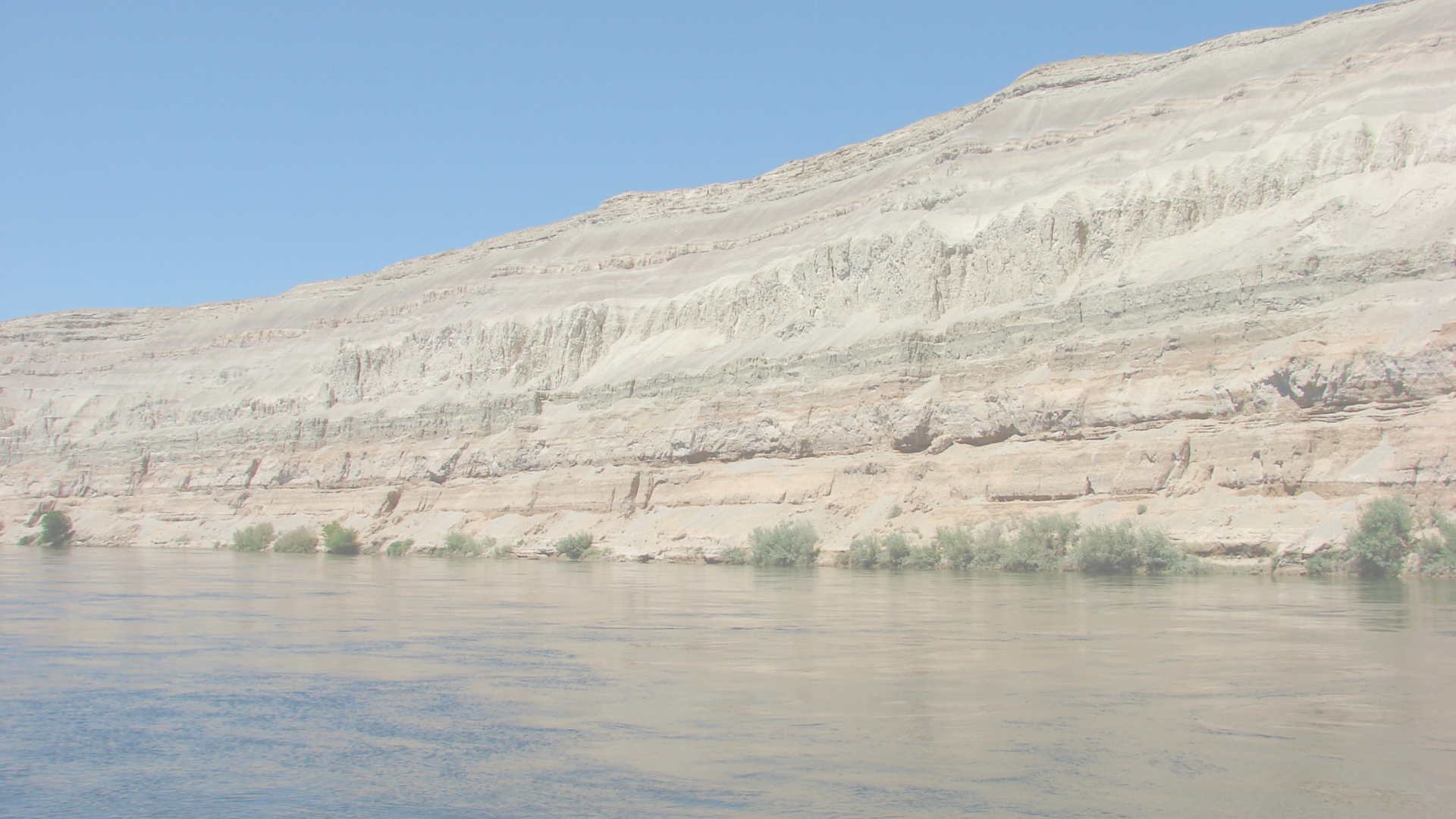Rhinos instead of Dinos
The layers of lava that became Columbia River basalts covered any signs of ancient life older than 17 million years. Though there may be fossils from the age of dinosaurs in the mid-Columbia River region, you’d have to drill through thousands of feet of basalt to find them! Fossilization is relatively rare in igneous rock such as basalt, but casts of trees formed petrified wood, the state gem of Washington. Petrified wood can contain a variety of colorful minerals and show the ancient trees’ growth rings. A cast of a rhinoceros in basalt near Blue Lake is evidence of one Miocene mammal that was here during the lava flows.
The Columbia River system has been depositing sediments since before the lava flows ended 6 million years ago. Once they stopped being buried in lava, the rivers’ gravel, clay, sand, and silt became the dominant materials in the Hanford Reach. These sedimentary layers, called the Ringold Formation, hold fossils of both land and aquatic animals and plants. The White Bluffs across the river from the Hanford site are a particularly thick deposit containing fossils of animals one might recognize today: camel, horse, turtle, beaver, deer, and fish such as muskie. Fossils of now extinct animals such as short-legged rhinoceros, giant ground sloth, and mastodon are also found in the White Bluffs. These cliffs rising 500 feet (152 meters) above the Columbia River and stretching for 30 miles (48 kilometers) are part of the Hanford Reach National Monument, and no public fossil collecting is allowed.








